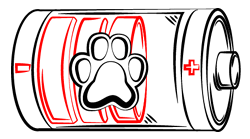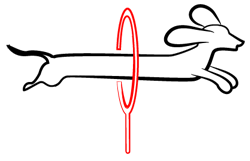
Paws ‘N’ Pups Quickview
Size
| Energy Level
| Trainability
| Paws ‘N’ Pups Rank
|
Characteristics
| Physical Characteristics: Height: 10-12” Weight: 14-18 lbs. Energy Level: Moderate-High | Health & Longevity:12-15 years Breeders screen for the following conditions:
Epilepsy, Demodectic mange and vaccine sensitivity are also seen. Pug Dog Encephalitis, an aggressive and fatal inflammation of the brain and only seen in Pugs. Allergies are also common, which can express themselves in many ways; ear infections, skin itchiness and chewing, hot spots, and gas. |
The American Kennel Club recognizes the Pug in the following colors:
|
Like other short-nosed (brachycephalic) breeds, the Pug can experience challenges navigating everyday life. They cannot tolerate temperature extremes, and their shortened muzzles and heavy bodies make it difficult for them to cool themselves in warmer temperatures; high humidity makes this even more difficult. In higher temperatures, these dogs must be given a cool spot with free access to water. Exercise, including walks, must be provided only during early morning or nighttime when temperatures are lower. For those living near or frequently visiting bodies of water, care must be taken to ensure the safety of your dog. With heavy bodies, short legs and shortened nasal passages, Pugs are notoriously bad swimmers, and must be outfitted with a properly fitted flotation device. It is recommended that Pugs be walked on a harness rather than a collar to avoid putting any additional pressure on the airway.
Temperament & Train-ability
The playful, mischievous Pug has a faithful following despite the challenges of living with them. Temperaments vary widely, with some being calm couch potatoes while others have boundless energy. Bred to be companions, they need to be with you and are not suited for long hours alone. Many Pugs have disdain for even mildly inclement weather, and are woe to go outside to eliminate if it’s wet. Pugs can make great companions for seniors and novice owners, and many are friendly towards strangers. They usually get along with other animals, although careful introductions are always recommended. Pugs often do well with children, although older children are recommended. Dogs and children should always be supervised, as neither are known for their good decision making abilities, particularly when excited. Children should be taught appropriate, gentle handling, and how to know when a dog needs a break. Dogs need to be carefully introduced to children to be sure they are comfortable, and removed from situations that stress them.
Pugs are well suited to apartment or condo life, or those with small yards. Exercise needs are moderate, but essential for a healthy life. Pugs are prone weight issues, and regular exercise along with portion control is needed. Their prominent eyes put them at risk of injury, so care should be taken to protect them; it is common for Pugs to experience the need of eye-related veterinary care at some point in their life. Pugs can be noisy dogs, not always barking but a myriad of snorts, snuffles, grunts, snoring…and gas.
Many Pugs are stubborn and bossy, leading to the assumption that they are difficult to train. Actually, the method used has more to do with how your Pug will respond to any training you wish to do; positive reinforcement methods are the way to go. Using punitive methods and heavy corrections can cause Pugs to dig in their heels, earning them their “stubborn” reputation. Armed with some treats and decent timing, you will likely find your Pug a most willing student. While there are some Pugs competing in dog sports, they’re not known for their work ethic. If you are looking forward to doing training with your dog, a Pug is probably not the breed for you. But tricks in the living room? That is right up their alley, as they love being the center of attention.
House-training is often the undoing of many a Pug owner. A very slow process, it can take a year for a Pug to be reliable, and even then, many don’t ask to be let out. The simple solution is to utilize potty pads or one of the many dog litter boxes on the market. That way, an acceptable location for them to go is always nearby. Taking time to condition your Pug to having his feet handled is recommended, as many are quite dramatic and stressed during this process – more so than other breeds. Because of their great love of food, or anything resembling food, teaching a reliable “leave it” with positive reinforcement is particularly handy and potentially life saving if your dog gets a hold of something that could harm him.
Grooming
The Pug’s short double coat is easy to care for, but one should be aware – these dogs shed profusely. Regular brushing with a curry or soft bristle brush will help remove dead hair; a monthly bath will keep your Pug fresh. Care should be taken to keep any wrinkles and skin folds clean and dry or they can become havens for bacteria to grow. Ears must be cleaned regularly, and toenails will need to be trimmed, as most Pugs will not wear their nails down even if walked on concrete. Teeth should also be checked and cleaned as necessary.
Diet
Most Pugs will eat about 1/2-1 cups of food per day, fed in two meals; free feeding is not recommended as Pugs can easily become overweight. It can be said that a Pug’s love of food is only eclipsed by his love of people. The amount fed can vary depending on age, activity level, and type of food fed. A high quality diet will produce the best results, but one should avoid a high protein diet as these are typically better suited to more active dogs and can cause problems for Pugs. Since Pugs can experience food-related allergies and sensitivities, some experimentation to find a food that works may be needed if sensitivities surface. Regular exercise is important to keep your Pug from becoming overweight. The good news is that a nice walk around the neighborhood is usually sufficient. Clean, fresh water should always be available.
Looking for a Pug?
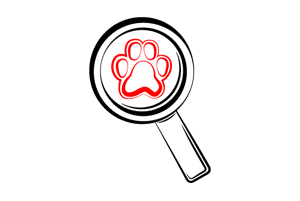 Find A Pug Breeder | 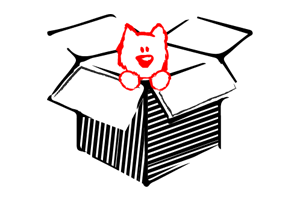 Pug Puppies For Sale | 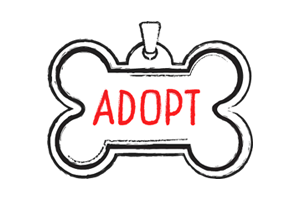 Adopt A Pug |
Cost
Prices typically range between $1,200-$2,000. Although sometimes purchase costs are less than this, one should carefully consider the potential health issues and related veterinary expenses when health screenings have not been done. Breed rescue groups provide screening and rehoming of dogs that, through no fault of their own, have lost their homes. Adoption fees vary, with an average fee of $400-$700. Be cautious when breeders advertise “rare” colors, as it is often nothing more than a marketing ploy to command top dollar. Also, many colors are indeed rare, with good reason; nature favors survival of the fittest, and many rare colors come with other genetic issues.
With airline restrictions on flying brachycephalic dogs, it may be necessary to add considerable travel expenses and driving time to get your new dog home. As with many purchases, the initial purchase price of any dog is only the beginning of the money you’ll spend. Buying supplies, food, and regular vet visits all add up; even in well-bred dogs, it is common for Pugs to have a fairly high need for regular vet care.
Paws ‘N’ Pups Ranking
Paws ‘N’ Pups ranks every breed out of 4 with 1 being easiest to integrate into your life and 4 being the toughest – The lower the ranking the better.
Ranking takes into account a few basic factors such as cost, skill level needed, high vs. low maintenance, and how critical regular training is to success. The Pug rates 3.5, due primarily to their cost and many physical challenges, which make for an overall high level of maintenance.
Breeds Similar To Pug
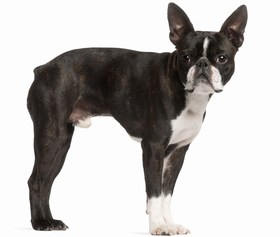 Boston Terrier | 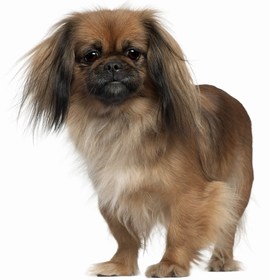 Pekingese | 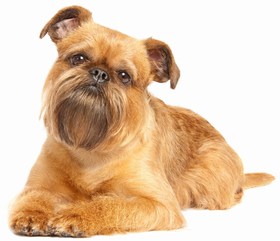 Brussels Griffon |


